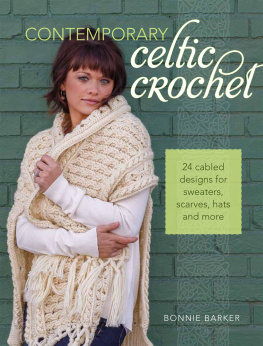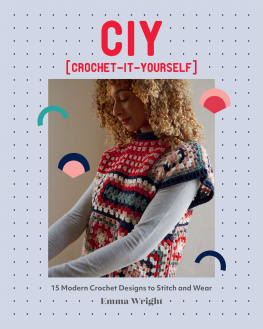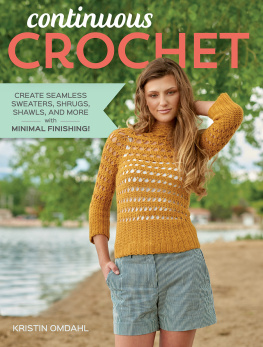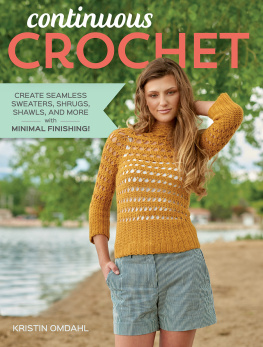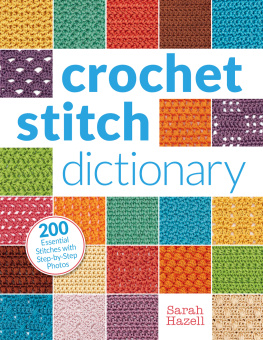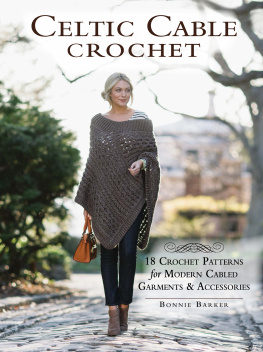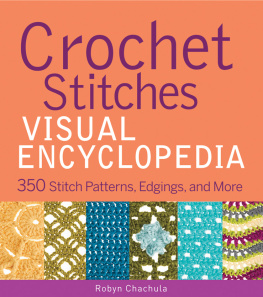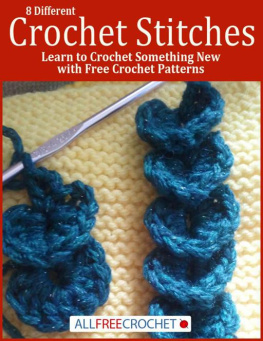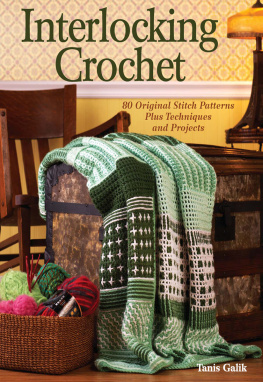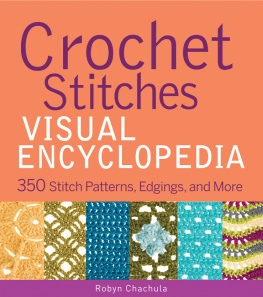Thank you for purchasing this Martha Pullen eBook.
Sign up for our newsletter and receive special offers, access to free content, and information on the latest new releases and must-have crafting resources! Plus, receive a coupon code to use on your first purchase from Store.MarthaPullen.com for signing up.
or visit us online to sign up at
http://marthapullen.com/ebook-promo
Contents
Introduction
Welcome to the contemporary world of Celtic crochet! Theres one message I want you to hear before you run away screaming in fear from any perceived difficulty in any of these projects: These stitches are not hard! Every stitch on every page of every pattern in this book is based on basic, fundamental crochet stitches you probably already know, and you dont have to run out and purchase any other fancy equipment (save that money for beautiful yarn). If you know how to crochet a chain, single crochet, double crochet, slip stitch and treble crochet already, youve got all the tools you need in your tool box and can complete any project in this book. That said, the projects do progress to offer intermediate and seasoned crocheters a pleasant and inspiring challenge.
If you are a beginner or new to these stitches, thats great! Please become familiar with the basic stitches mentioned above. Once you know these basic stitches, I would encourage you to start on the patterns toward the front of the book, which focus on only one or two stitches at a time, until your stitches are reasonably even in size. A scarf is always a great way to start. Should you ever get stuck, you can always go to the stitch guide for step-by-step instructions for each stitch. You can also watch instructional videos on my website at www.BonnieBayCrochet.com. There are many ways to learn these wonderful stitches.
Ive been infatuated with the beauty of Aran knit stitches for years, but I have a confession to make: I dont enjoy knitting! Yes, Ive tried it and can do it, but I prefer crochet. I just love the smooth and relaxing motion of the hook in my hand, not to mention that the process is so much faster, at least for me. Hence, this book on contemporary Celtic crochet is my answer to this dilemma. Yes, I do want it all!
Knitters, please know that I will always admire what you do (I have to, especially since my budding crochet designer daughter has recently gone over to the dark side of the Force and learned to knit), yet I will seek every opportunity to imitate it with crochet stitches if and when humanly possible. Yes, you may call me stubborn, but contented I remain.
Bonnie Barker
Dedication
To the master designer, Jesus the Christ.
For you, O Lord, have made me glad by your work; at the works of Your hands I sing for joy. Psalm 92:4
Getting Started
A FEW WORDS ABOUT YARN WEIGHTS AND SUBSTITUTIONS
Each pattern in this book lists the specific yarn used as well as the classification of the yarn weight, which is directly related to the yarns thickness. If you choose another type of yarn, I would encourage you to stay within that numbered weight in order for your project to remain consistent. However, even within each weight category, you will find a subtle variation in yarn thickness. In other words, not all DK weight yarns are exactly the same, nor are all worsted weight yarns the same, either. Depending on the content of the yarn (wool, acrylic, cotton, blends, etc.), it will behave differently. Your best bet is to make a small swatch before beginning your project and evaluate whether that particular yarn would be a good substitute.
SKILL LEVEL SYMBOLS
Dont be afraid of these symbols. They are your friends! As mentioned earlier in the book, once you have become familiar with the most basic crochet stitches (chain, single crochet, double crochet, treble crochet and slip stitch), you should be able to attempt most of the projects up through the intermediate level. If you are an intermediate crocheter, dont be afraid of the experienced symbols. Consider these an opportunity to grow and add a new skill or two to your crochet repertoire.
Beginner
Easy
Intermediate
Experienced
WHY IS MY SCARF GETTING FAT OR SKINNY?
If youve crocheted for long, youve probably experienced your work growing or shrinking in places when you dont want it to. Once youre past the beginning stage of your crochet career, you will understand how to fix this problem: place only one stitch in each stitch. If you skip the first stitch of the row, then put the last stitch in the turning chain. If you do this consistently, your crochet piece wont grow or shrink. If only dieting were as easy!
THE GREAT TURNING CHAIN DEBATE
If you follow the Craft Yarn Council of Americas excellent recommendations (skipping the first stitch in double crochet rows and making a double crochet in the turning chain), you will maintain an even stitch count and straight sides. However, you will also have a slightly larger hole where the chain 3 is located. Since many of my designs are anything but straight double or treble crochet, Ive taken some liberties to rid most of my designs of these dreaded holes. This is why I choose to use a chain 2 for double crochet turning chains, and chain 3 for treble crochets. These are not misprints! I also begin crocheting in the first stitch of the row and only crochet into the turning chain when specifically directed to do so by the pattern. Consider it use of my artistic license. I apologize if this small adjustment rocks the boat too much for any seasoned crocheters. If you complete a pattern or two, youll understand. I may even win you over to my side of the Great Turning Chain Debate!
List of Abbreviations
| approximately | approx |
| back loop(s) | blp(s) |
| back post | bp |
| back post Braided Cable | bpBC |
| back post Celtic Weave | bpCW |
| back post double crochet | bpdc |
| back post treble crochet | bptr |
| beginning | beg |
| Braided Cable | BC |
| Celtic Weave | CW |
| chain | ch |
| chain space | ch sp |
| cluster | CL |
| continue | cont |
| contrasting color | CC |
| decrease(s) | dec(s) |
| double crochet | dc |
| double crochet popcorn | dcpc |

